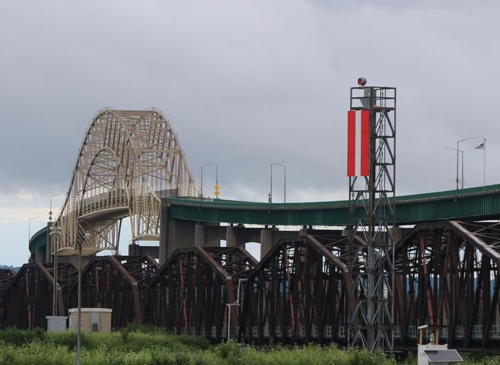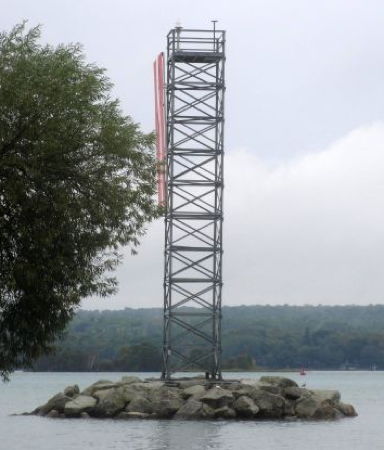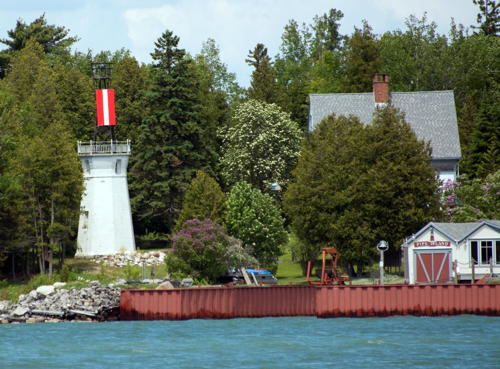The United States of America is a federal union of 50 states and a capital district. The state of Michigan comes in two parts: the Lower Peninsula between Lakes Huron and Michigan and the Upper Peninsula between Lakes Michigan and Superior. Putting the two together the state has an astonishingly long coastline, so it is not surprising that Michigan has more lighthouses than any other U.S. state, by quite a large margin. The Directory has information on more than 170 Michigan lights.
The first European outposts on the Upper Peninsula were established by France beginning at Sault Sainte Marie in 1668. Control passed to Britain after the Seven Year's War in 1763. Britain retained control of Michigan following the American Revolution, finally withdrawing in 1796-97. The U.S. Congress established Michigan Territory in 1805; for many years it included a large area of the northern Great Plains. Michigan with its present borders was admitted to the Union as the 26th state in 1837.
This page includes lighthouses of Chippewa County at the eastern end of the Upper Peninsula, including the numerous lights of the Saint Marys River, which drains Lake Superior into Lake Huron. The river forms part of the boundary between the United States and Canada. Canadian lights on the river are listed on the Western Ontario page. There are also separate pages for Southern Upper Peninsula and Northern Upper Peninsula lighthouses.
The state's lighthouse heritage is well recognized. Michigan is the only state that supports lighthouse preservation with a program of annual grants from the state to local preservation groups. All over the state volunteers are working hard to save and restore lighthouses. There is a state preservation society, the Michigan Lighthouse Conservancy, and the Great Lakes Lighthouse Keepers Association is also based in the state.
Aids to navigation on the Upper Peninsula are maintained by the U.S. Coast Guard Sector Northern Great Lakes based with an Aids to Navigation Team at Sault Sainte Marie, but ownership (and sometimes operation) of historic lighthouses has been transferred to local authorities and preservation organizations in many cases.
ARLHS numbers are from the ARLHS World List of Lights. USCG numbers are from Volume VII of the United States Coast Guard Light List.

Round Island (St. Marys River) Light, May 2023
Google Maps photo by Vicki Wiley











